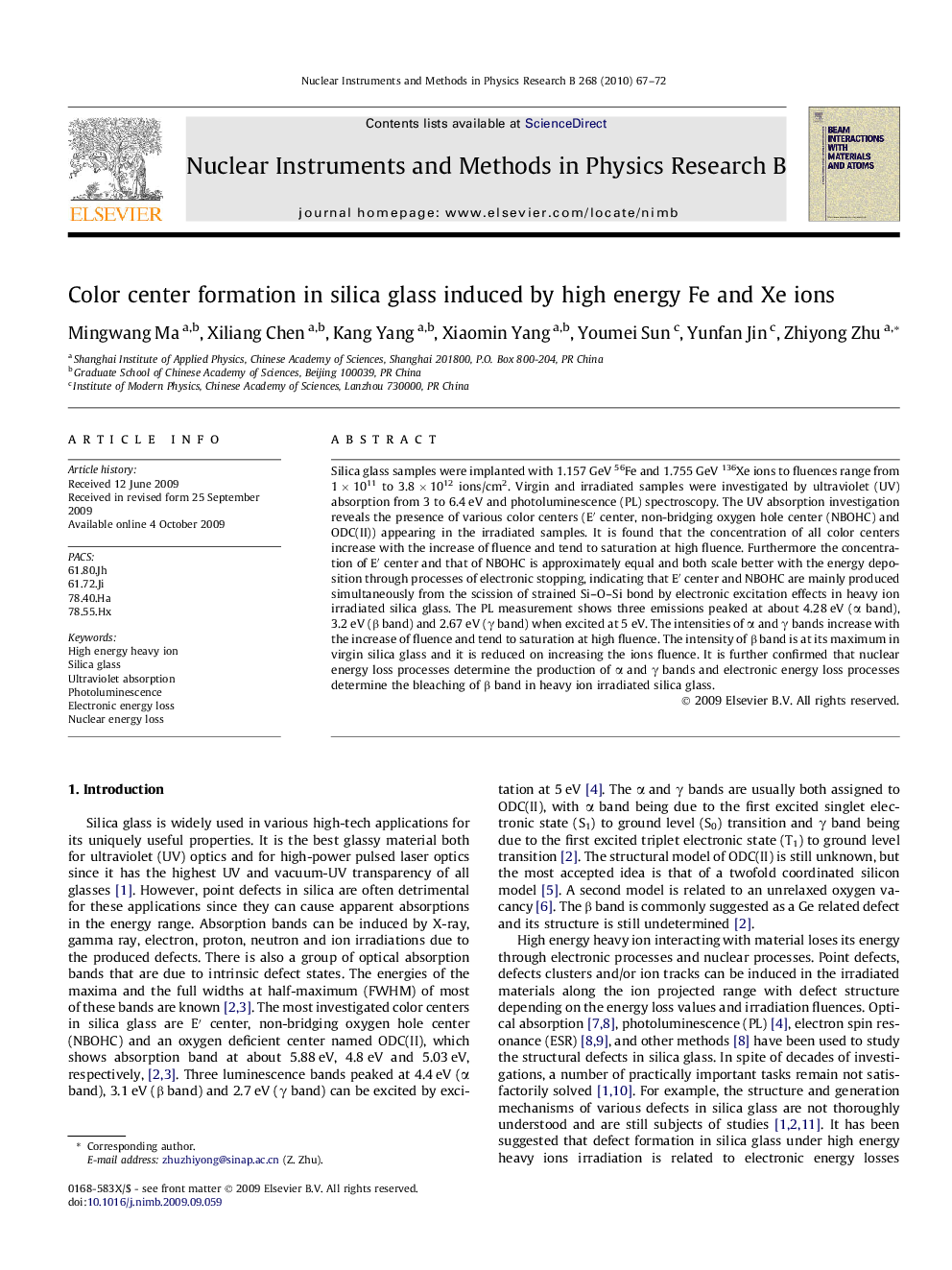| Article ID | Journal | Published Year | Pages | File Type |
|---|---|---|---|---|
| 1683683 | Nuclear Instruments and Methods in Physics Research Section B: Beam Interactions with Materials and Atoms | 2010 | 6 Pages |
Silica glass samples were implanted with 1.157 GeV 56Fe and 1.755 GeV 136Xe ions to fluences range from 1 × 1011 to 3.8 × 1012 ions/cm2. Virgin and irradiated samples were investigated by ultraviolet (UV) absorption from 3 to 6.4 eV and photoluminescence (PL) spectroscopy. The UV absorption investigation reveals the presence of various color centers (E′ center, non-bridging oxygen hole center (NBOHC) and ODC(II)) appearing in the irradiated samples. It is found that the concentration of all color centers increase with the increase of fluence and tend to saturation at high fluence. Furthermore the concentration of E′ center and that of NBOHC is approximately equal and both scale better with the energy deposition through processes of electronic stopping, indicating that E′ center and NBOHC are mainly produced simultaneously from the scission of strained Si–O–Si bond by electronic excitation effects in heavy ion irradiated silica glass. The PL measurement shows three emissions peaked at about 4.28 eV (α band), 3.2 eV (β band) and 2.67 eV (γ band) when excited at 5 eV. The intensities of α and γ bands increase with the increase of fluence and tend to saturation at high fluence. The intensity of β band is at its maximum in virgin silica glass and it is reduced on increasing the ions fluence. It is further confirmed that nuclear energy loss processes determine the production of α and γ bands and electronic energy loss processes determine the bleaching of β band in heavy ion irradiated silica glass.
